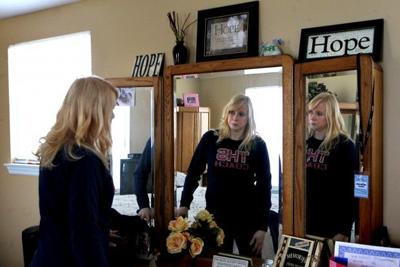Two environmental disasters created in this region generations ago — nuclear waste in in north Ó£̀̉ÊÓƵ County and lead mine debris from the Doe Run smelter in Herculaneum — share striking similarities.
In each case people have died, land has been laid barren, corporations have pointed fingers at everyone in sight and the state has not fully lived up to its responsibility to protect citizens and regulate businesses.
It may be too late to do more in the case of the smelter in Herculaneum. Hope was buried by the Missouri Legislature last year when it overrode Gov. Jay Nixon’s veto of a bill limiting large punitive damage awards against Doe Run to people who contend lead mine debris contaminated their property and poisoned their children.
People are also reading…
was the most recent owner of the smelter. In July 2011 a Ó£̀̉ÊÓƵ jury awarded $320 million to punish the Fluor Corp., which owned the mine before Doe Run. The Legislature was shielding Doe Run’s owner — junk bond billionaire Ira Rennert — from the same sort of justice. When it comes to choosing between working-class Missourians and a New Yorker with a fortune estimated by Forbes magazine at $6.3 billion, the Legislature does not flinch.
However, there is still time to help the people who were raised along the 15 miles of Coldwater Creek that wanders through the communities of Florissant, Hazelwood, Black Jack, Spanish Lake, St. Ann, Berkeley and Ferguson.
, director of the Missouri Department of Health and Senior Services, may turn out to be a hero for many of those residents. She also may be Exhibit A in why state and federal regulatory agencies are necessary to stand between corporate actions and citizen safety.
What Ms. Vasterling did late last month was to actually acknowledge that there may be something to the fears that have haunted the area’s residents for decades. This doesn’t sound like so much, except that Missouri regulators aren’t usually so forthcoming.
Ten days ago Ms. Vasterling asked for help from the federal Centers for Disease Control and Prevention to design a study to investigate whether there is a link between the high rates of cancers in north Ó£̀̉ÊÓƵ County and the historical nuclear contamination of Coldwater Creek.
She told the Post-Dispatch’s Blythe Bernhard that she based her request on concerns from the public, the history of nuclear waste in Ó£̀̉ÊÓƵ and the results of a new state cancer study.
It’s taken some 60 years and too many deaths for someone with authority to say yes, we need a scientific study to find out whether these two things are connected. Others have said there is no connection — most recently the Missouri Department of Health and Senior Services reported last year that it found no higher risk of cancers linked to radiation for people living in six ZIP codes adjacent to the creek. But the health department acknowledged that its study did not include people who had moved out of the area. Results were inconclusive.
So then the state updated the study with disease investigators adding seven years of cancer data through 2011, more rare types of cancers and the two ZIP codes (63034 and 63044) in Maryland Heights and Bridgeton nearest the West Lake Landfill, where nuclear waste was dumped illegally in the 1970s.
About the same time, a frustrated group of McCluer North alumni conducted an informal survey of their own. They had noticed a spike in cancers among childhood friends who were then in their late 30s and early 40s. The group started a Facebook page that grew to nearly 8,500 members by January.
The group launched an informal survey last year of 3,300 current and former residents and found that more than a third of those contacted had developed cancers. Their findings contradicted the state health department report.
Survey participants reported 202 thyroid cancers or conditions, 113 brain tumors and 320 auto-immune disorders. Among the more interesting findings was 37 appendix cancers — an extremely rare form of cancer that affects fewer than 1 in 314,000 Americans a year.
Area residents have been trying since at least the 1980s to get someone to listen to their worries about Coldwater Creek. It was contaminated after Ó£̀̉ÊÓƵ’ Mallinckrodt Chemical Works secretly signed on in 1942 to participate in the Manhattan Project by enriching uranium for the world’s first controlled nuclear chain reaction.
The company refined uranium for 15 years at a downtown site and stored tons of hazardous waste there. When it ran out of room, the company trucked more tons to a couple of sites near the airport and the headwaters of the creek.
When the isolated area expanded during the population boom of the 1950s, with construction proceeding at a rapid pace, nuclear toxins were spread through the dirt and air. When the creek would flood, the contaminants would spread even farther.
A federal judge last year dismissed all but one claim in lawsuits filed against Mallinckrodt by 29 people who believe their cancers were caused by the creek’s radioactive contamination. Some Mallinckrodt workers who developed one of 22 cancers have been determined eligible for payment of medical expenses plus $150,000.
Now, with Ms. Vasterling’s request to the CDC, residents can have some hope for recompense. It won’t offset the tragedy of cancer, but it could be a form of justice that’s been too long coming.












